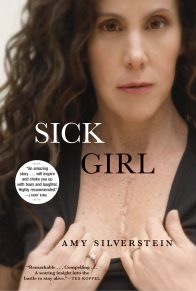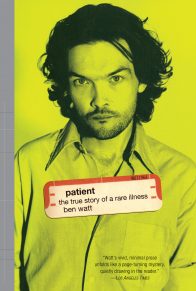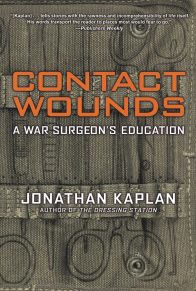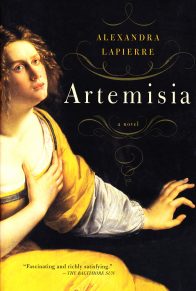As a child, I was haunted by the thought that Dad was about to die. Despite having the physique of an enormous bear—standing at six foot two, stoutly built, with a plume of wiry black hair—he was, I thought, fragile. Although when I was a child, he could lift me high above his head, it seemed even then as if he had been weakened by age and, like a ruined castle in the throes of collapse, as if he were in constant danger of toppling. Perhaps I had developed this impression because he was so much older than my friend’s fathers. My anxiety reached its peak when I was eleven years old and he was to be away for three months on an academic sabbatical. In the days before his departure, I became convinced that he would die before I would see him again. The journey to the station, therefore, was to be my last time with him.
So, rather than chatting to him amiably, I began to trace his wrinkles and his eyes in the car’s rearview mirror. Like a diligent cartographer, I divided his face into sections and tried to memorize every contour and blemish in a desperate attempt to imprint his features on my mind. To this day, when I drive down that particular piece of road, flashes of his face pass through my thoughts.
By contrast, I felt no similar foreboding for my mother. There is nothing in her nature that hints at her mortality.
My worry about Dad did not recede as I grew older. When he stood waving good-bye to me outside our family home, when he wandered away into the crowds of a London street, or when his face disappeared into the distance as his train moved off, I often wondered if it would be the last time I would ever see him. One gesture, in particular, seemed to encapsulate the way I thought he would depart: as he walked away, hurrying to another appointment, he would thrust his hand into the air and, without looking back, wave good-bye. For years, every time he did that I presumed that it would be my last memory of him.
Cancer has always existed among humans. When the first man stood upright on the plains of Africa more than a million years ago, he or one of his relations suffered from the disease: a fossilized jawbone that was excavated near Nairobi in 1932, for instance, contains the scar of what many believe to be a malignant tumor; the victim was either Australopithecus or Homo erectus, who both existed at the dawn of our species. The disease’s filigrees have also left their marks on Egyptian mummies, on a 2,400-year-old Inca body, and on Bronze Age heads. One of the earliest written texts, a 110-page Egyptian scroll called the Ebers papyrus, from about 1600 B.C., describes large, loathsome tumors of the leg. A thousand years later, Ayurvedic medical books from India reported mouth and throat tumors and described how to treat them. By 400 B.C., Greek doctors had written about tumors of the breast, stomach, skin, cervix, and rectum. For classification they used the word for crab, carcinos (hence carcinoma), apparently because of the way in which tumors—especially those of the breast—transform the skin into hard plates from which leglike blood vessels protrude. In time, this word was Latinized to cancer.
Yet although cancer had been identified in ancient times, the disease was responsible for only a tiny proportion of all deaths: many more people were killed by smallpox, the plague, and a variety of then unnamed infections. With an average lifespan of about thirty years, few would have lived long enough to develop a life-threatening tumor, whereas nowadays two-thirds of cancer cases occur in the over-sixty-fives. Even those cancers that were fatal usually went undiscovered because there were no tools to investigate inside the body’s organs, and postmortem examinations were eschewed because of beliefs and superstitions about the sanctity of the body. As such, cancer hardly touched the culture or the imagination of the ancient world.
“Why these symptoms develop is not known by physicians themselves, let alone the masses,” wrote the celebrated physician of the Roman era, Galen, on the subject of cancer in A.D. 165, “nor do physicians make systematic investigation; they simply announce what they think.” Galen was famous as the doctor to the emperor Marcus Aurelius and for his public dissections of pigs (who would continue to scream until he theatrically cut their laryngeal nerve). But he was also a prolific author of a series of works that described, elaborated, and refined the ideas of Hippocrates and other Greek physicians. Nonetheless, a clear definition of cancer eluded him, and he confused the characteristics of tumors with those of all kinds of other inflammations, including piles, abdominal swellings, and fluid-filled cysts. When he did formulate a description—“swellings which are contrary to nature and affect the whole body or any part of it”—it was so general that it was meaningless.
Galen’s view of the mechanism of the disease was equally confused, as he believed that all health and illness was caused by the interaction of the four bodily humors, blood, phlegm, and yellow and black bile, the prevailing theory of the time. Tumors would grow, he argued, when the black bile responsible for the melancholic temperament became corrupted and stagnant. He suggested that this might happen when the spleen—the organ to the left side of the stomach beneath the diaphragm—failed to purify food toxins from the blood; Egyptians were supposedly at particular risk because they lived on ass’s meat. Galen also suggested that old age was a factor: when the lively blood of youth became sluggish and stale, the black bile of older women resisted natural expulsion and collected in the breasts. Recommending a change in diet in favor of bloodless white meat, he also favored bloodletting with leeches and treated superficial cancers with the application of coal tar and caustic creams. Tumors deep within the body were mostly not detected, and those in the cervix, for instance, were generally left untreated for fear of harming the patient.
“I have done as much for medicine as the emperor Trajan did for the Roman Empire when he built bridges and roads through Italy,” Galen once boasted, and for a millennium his ideas dominated the Byzantine world under Islam and the great medical schools of Northern Italy; during the Renaissance his works were republished in more than five hundred editions. Of course, many of Galen’s theories were wrong, as he had been limited by the Roman belief that the human body was sacrosanct and could not be disturbed after death, and so he had little firsthand knowledge of the simplest human biological mechanisms. The only windows into human anatomy were through gladiators’ wounds, while the men were still alive.
Despite these limitations, the threads of Galen’s influence reach toward us: the false but surprisingly pervasive notion, for instance, that cancer is caused by sadness has its roots in the idea that the melancholic humor was a determining factor. Similarly, Galen recommended that doctors adopt a formal and authoritative bedside manner in order to better win the trust of patients, a mode of behavior that continues to be enacted in many consulting rooms.
However, medicine required the freethinking men of the scientific revolution to overturn the false ideas of the ancients.
My lifelong fear for Dad’s health sprang, in part, from his inability to see his body as anything other than a rather pointless and badly engineered vessel to transport his brain. Blind to his own physicality, he hardly ate for reasons other than taste, nor did he exercise, and he smoked the odd cigar in the face of my mother’s protests and drank copious amounts of red wine. His own mechanics continued to function regardless, apart from one occasion when I was about eight and I watched from an upstairs window as paramedics carried him, crying with back pain, into the ambulance. He soon healed.
Freed from the burden of having to think about his body, Dad could concentrate on developing his mind. Though his job had been to teach statistics at the University of Birmingham, he preferred to invigorate the imagination of his students by talking about the Romantic poets, Greek philosophers, and eighteenth-century thinkers. Dad thought that those who simply wanted to learn the curriculum would be better off reading the textbooks. Since retiring from teaching, his study of statistics had been demoted in favor of a broad range of other subjects—opera, history, and Egyptian hieroglyphics among them.
His dominant passion was printing beautiful pamphlets and ephemera. For years, the garage of the family home had been filled with enormous cast-iron printing machines, the loft above it packed with hundreds of cases containing tiny lead letters and enormous wooden postertype a foot high. As a child I often sat on the workbench watching him set the type by hand, roll the ink across the press, and then feed in the paper, while the cast-iron press clattered like an old train. He was particularly proud of Diseases of Printers, a sixteen-page pamphlet in which he had reprinted a portion of a book first published in 1700 by Bernardino Ramazzini, the father of occupational health. This particular extract enumerated the various ailments that afflict “servants to the republic of letters.” On its last page, Ramazzini advises that printers who are “attacked by acute diseases must be treated with remedies that suit their particular case.”
The first roots of this scientific medicine, which would eventually form the foundation of all cancer treatments, were planted in the second half of the sixteenth century, when anatomists began to dissect human bodies and draw and describe the structure of each organ. Thus observation began to triumph over superstition. The first meaningful discovery of this scientific revolution was William Harvey’s description, in 1628, of blood circulating around the body and traveling through both ventricles of the heart. Soon afterward, other scientists began to understand the lymphatic system, a branching network of tubes that carries a colorless watery fluid called “lymph” and a variety of glandular products. Discoveries about the digestion and the workings of the nerves quickly followed. The idea of the human body as an integrated engine was being slowly imprinted on the minds of scientists.
The understanding of anatomy, however, had little immediate effect on the treatment of cancer; nor did the beautifully engraved pictures of the body’s architecture give any real sense of how diseases could begin, develop, and kill. In any case, cancer continued to kill comparatively tiny numbers of people. Some tumors were so out of the ordinary that in 1669 the family of a Dorset girl called Elizabeth Trevers—she of “fair complexion, brown hair’d”—allowed thousands of strangers to inspect her enormously swollen breast, according to a report presented to the Royal Society in London. Similarly, Bernardino Ramazzini’s exhaustive 600-page manual of occupational diseases, published in 1700, mentions cancer only once, stating that it affected the breasts of nuns: “You can seldom find a convent that does not harbor this accursed pest, cancer, within its walls.”
During the seventeenth century, cancer remained a rare disease of older women, with little innovation in treatments. Instead, old methods were used: tumors were coated with poultices, plantain leaves, tobacco plants, arsenic pastes, the juice of black nightshade leaves, or lead and mercury tinctures; in the case of ulceration, rotten apples, frog spawn, fresh veal, or even pigeon, cut up while still alive, was applied. One popular treatment was to lay crawfish or crabs on the tumors, following the Doctrine of Signatures—the idea that nature itself would indicate the most appropriate treatment—which was a commonly held belief, and widely circulated in such books as Nicholas Culpeper’s English Physician Enlarged of 1653.
Surgery was rarely contemplated, because the incisions turned gangrenous and putrefied. When there was no other option, “the surgeon should therefore be steadfast,” advised one teacher, “and not allow himself to become disconcerted by the cries of the patient.” An ingenious Dutchman invented a device that looks to modern eyes like a giant cigar cutter: two great semicircular pincers made of good steel to hold the breast in place while a curved blade sliced it off in one movement, probably resulting in a very bloody wound that would likely become gangrenous. Unsurprising, the device never became part of usual surgical practice.
Dad had been suffering from a pain, which had developed from a dull throb to a jagged pierce, for three weeks when he first told me. His doctor had prescribed him a few painkillers and had made an appointment for an X-ray. Active and aged seventy-two, he thought it so insignificant that he mentioned it only as an afterthought, in a telephone conversation.
A few weeks later, when I returned home for a Sunday lunch, Dad was cooking, chopping vegetables determinedly. It was the middle of April 2002. He was stooped, his shoulders were a little more rounded than usual, and his head had retreated into his shoulders. Instead of charging around the kitchen as was his way, he was sitting on a high stool. I asked how he was; he said he had a little back pain. I presumed the cause was that he had been lifting the enormous cases of lead printing type. But during lunch, when he couldn’t move the casserole or plates, I realized the seriousness of his pain. He explained how during the previous few days he had been unable to sleep horizontally, and instead he had been fitfully sleeping in an armchair. Waiting on the result of the X-ray, he had been taking handfuls of painkillers. When his sister, Helen, heard about his self-medication she warned him, as a doctor, that he was close to overdosing.
Cancer became a little more visible in the middle of the eighteenth century. In about 1750, the first hospital dedicated solely to the disease opened in Reims, in France, sponsored by the cathedral’s cardinal—perhaps in order to care for his nuns. Yet medicine had little to offer cancer patients, despite leaps of insight being made in other areas of scientific endeavor, such as the description of the cosmos and the properties of gases. Fundamental questions remained unanswered: how was cancer to be distinguished from other swellings, such as those of leprosy? Was a tumor the symptom of the failure of the body as a whole or just of a specific organ? And, most important, what caused it? Filling the place of the facts was speculation. One theory, dating from the sixteenth century and widely believed throughout Europe, was that tumors were caused by “acrimony,” a process whereby chemicals apparently mixed in the blood. So convinced was one physician that he placed a sliver of excised breast tumor on his tongue in order to demonstrate that it was acidic. Others believed that tumors were the result of physical trauma, and one prudish physician suggested that the bawdy practice of touching women’s breasts might lead to the disease. Some supposed that deep sorrow or shock was the cause.
Glimmers of enlightenment came with the publication, in 1761, of De sedibus et causis morborum (On the Sites and Causes of Disease), by Battista Morgagni, an eighty-year-old professor of anatomy at the University of Padua. Drawing on the findings of more than seven hundred autopsies, he showed how the degeneration of certain organs was associated with certain diseases. He divided his book into four sections, covering diseases of the head, the chest, the abdomen, as well as surgical conditions. He described in detail the case history of each patient and the autopsy results, drawing links between the two sets of observations. He discovered that clots around the heart, for instance, had killed the patient with a heart attack; and he showed that a stroke had been caused by a change in the blood vessels in the head rather than in the flesh of the brain itself. Though he had little to say about cancer, Morgagni had created a new method, pathology, to understand how diseases progressed. Shifting medicine’s focus away from symptoms and toward the deterioration of specific organs, he created a tool as profound as Galileo’s telescope, which had opened up the heavens.
The day after Dad cooked Sunday lunch, I sent him lists of chiropractors and osteopaths, convinced that a little manipulation would end the pain. When they demanded to see X-rays, he pursued his GP for the results. The following day, Dad was called to the clinic. The image was clear: one of his neck vertebrae had crumbled. A second seemed to be cracking.
The doctor had organized an emergency hospital admission, and Dad walked the mile to get there. His neck was so fragile that had he tripped then, he would have died. At the hospital he was placed on the bed of the magnetic resonance imaging scanner. Once in the humming sarcophagus of the machine, a pain of an intensity he had never experienced before seared through his neck. Later he realized that it was the second vertebra collapsing.
For a man who had spent so much of his life defining himself through his intellect, there seemed to be something particularly malicious about the way that nature was now trying to disconnect his head from the rest of his body. It was as if, after years of being ignored, his physical self was now reasserting itself with a bold, new certainty.
A century after Isaac Newton had transformed the physical sciences, cancer medicine was, at last, beginning to develop equally rapidly. In 1775, Sir Percival Pott of St. Bartholomew’s Hospital, in London, realized that chimney sweeps were often on his wards with scrotal cancer. As boys they had been “thrust up narrow, sometimes hot, chimnies where they are burned and almost suffocated,” he wrote. “When they get to puberty they become particularly liable to a most noisome, painful and fatal disease.” It was the first identification of an industrial cancer. And by blaming the soot, he was the first to propose that chemicals could cause the disease, albeit for a very specific and rare tumor. At the same time, cancer was becoming more visible, so much so that, in 1791, the brewer Samuel Whitbread endowed the first cancer ward in London, at the Middlesex Hospital.
Nonetheless, tuberculosis and epidemics such as dysentery, typhus, and cholera dominated the public’s imagination at the beginning of the nineteenth century, because cancer was still quite rare. The first statistical analysis of deaths from cancer was carried out by Domenico Antonio Rigoni-Stern in Verona between 1760 and 1839. During that time, 994 women and only 142 men had died of the disease in that city. In total, less than one death per hundred was due to cancer. Today the equivalent figure is about 25 percent—or one in four deaths—some of the increase owing to better diagnosis and our lengthening lifespans.
However, the disease was becoming so worrisome that, in 1802, a group of Scottish worthies thought it necessary to gather together with the “intention being solely that of cooperating in the laudable endeavour to lessen the mals of human misery, by calling for the assistance of others by exerting themselves to obtain remedy for a most painful and dreadful disease, against which all medicine and methods of treatment hitherto proposed and tried have been unavailing.” Although they understood that this was a disease that predominantly affected old people, they had few other insights. So they published a brochure in order to inspire men of letters to address this difficult problem, asking a series of questions: Is cancer a primary disease? Is it hereditary? Is it contagious? Is there a temperament of the body more susceptible? Can it be cured naturally? And do “brute creatures” also suffer? Four years later, there was little to report by way of answers.
One reason for the lack of progress was a shortage of bodies for dissection throughout Europe and America. Many families refused to have their loved ones’ souls disturbed; others were afraid that scientists would turn cadavers into monsters—just as in Mary Shelley’s best-selling Frankenstein, published in 1818. In desperation, anatomists retained the services of body snatchers to dig up graves and cart the rotting remains to medical schools. Most famously, William Burke and William Hare from Edinburgh murdered their victims before selling them. In 1827, this rising conflict between the public and the dissectors—who saw themselves as the heralds of a new age of science—spilled onto the streets. In Aberdeen, twenty thousand people gathered outside the medical school; as their numbers swelled, the gates gave way and crowds of people ran through the corridors, fighting with doctors and carrying off the bodies of their friends and relatives. There had already been one riot in New York, sparked when a medical student taunted a young boy, claiming that a dismembered arm belonged to his mother.
By 1832, British and North American legislatures were therefore forced to pass “Anatomy Acts,” which regulated dissection while insisting that workhouses release the bodies of the destitute to medical research. Scientists were, for the first time, able to dissect thousands of cadavers to investigate the natural history of diseases. Cancer had a unique position in these researchers’ plans, because doctors rightly assumed that studying the unregulated growth of tumors might give them insights into how normal flesh developed. So, as the new age of cancer science began, doctors set out to understand not only one of humanity’s most pernicious threats but also the secrets of human life itself.













